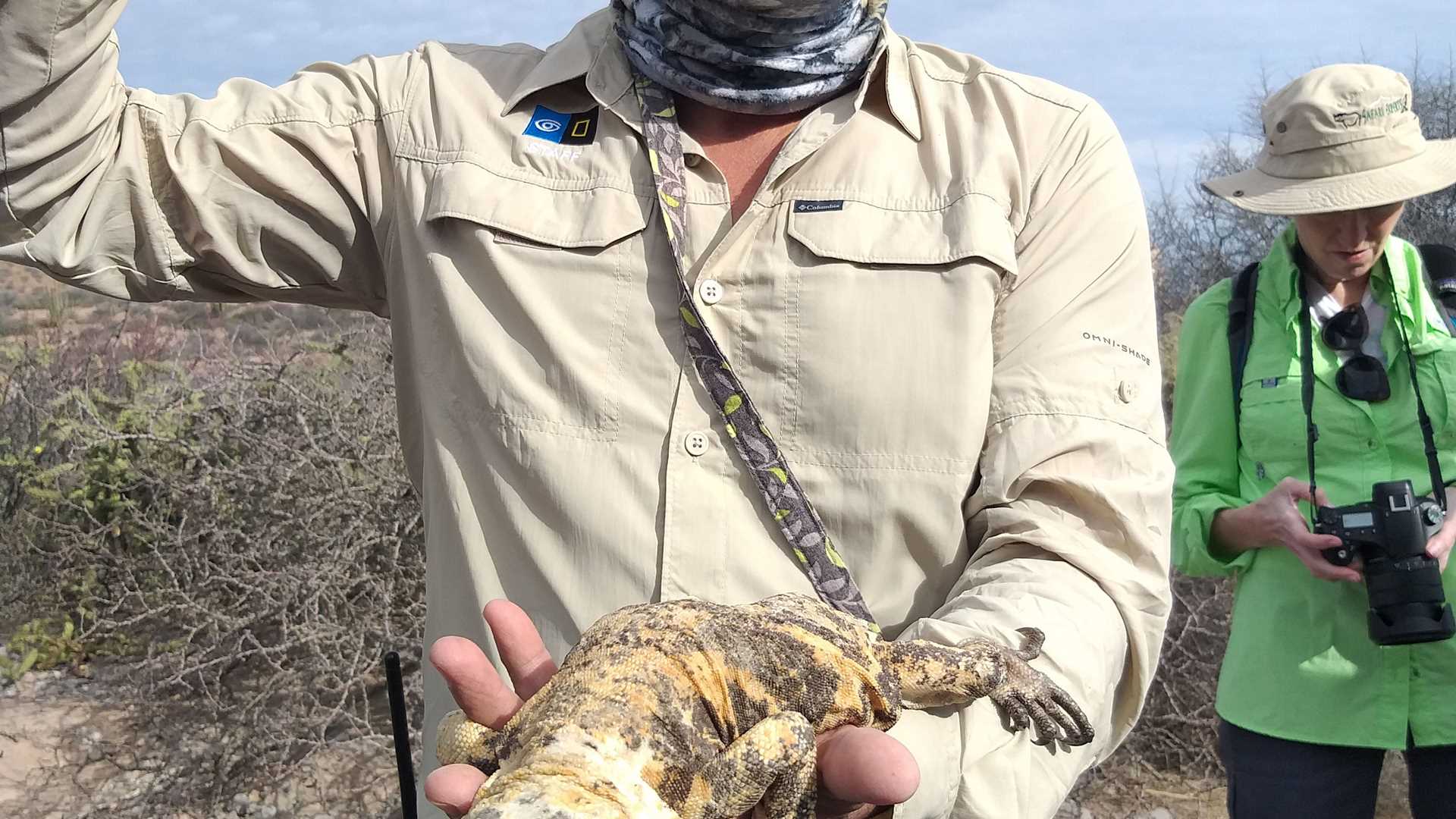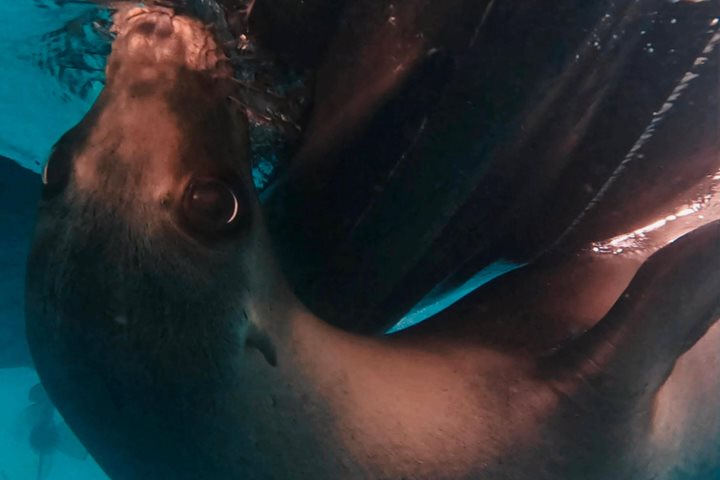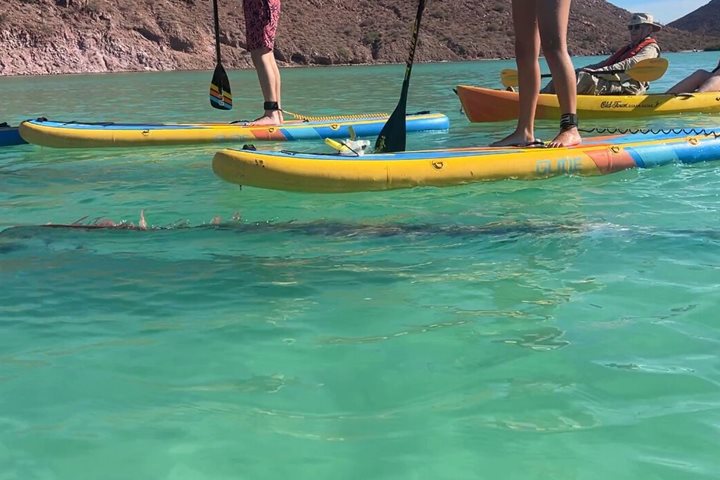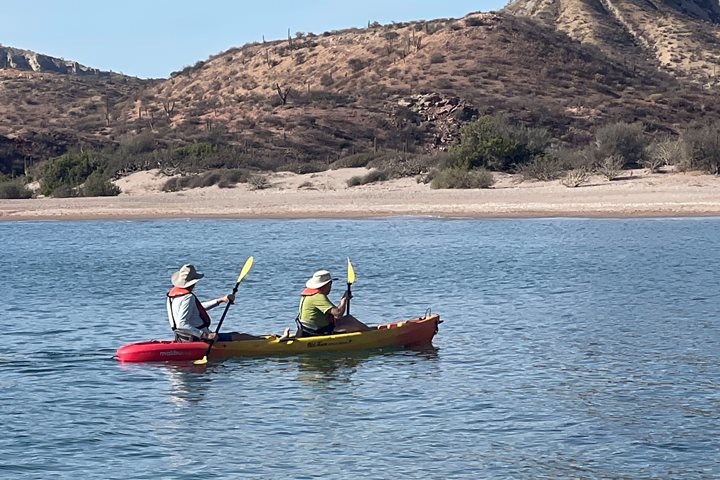This morning we explored San Esteban, a magnificent island in the Midriff region of the Gulf of California. A wide, deep and wonderful arroyo crosses the island from south to north. The island is home to two of the most remarkable lizard species: the giant chuckwalla and the spiny-tailed iguana, both endemic. Guests and naturalists discovered amazing plants growing in the arroyo, such as jojoba, ragweed and cacti, including varieties like cardon, galloping and organ pipe. One party found an adult chuckwalla. Our guests took many photographs of the somewhat skinny individual. This region is prone to periodical long-lasting droughts, which can diminish a usually abundant food supply. We also found a dead spiny-tailed iguana, probably a meal for a red-tailed hawk or some other raptor. By noon, we left San Esteban and navigated southbound to San Pedro Martir, another impressive island.
Once on San Pedro Martir, guests and naturalists cruised around the island on boats. Blue-footed and brown boobies, brown pelicans and tropical birds filled the sky above us. Hundreds of California sea lions sunbathed on the rocks or demonstrated their acrobatic skills as they swam in the sea. Bottle-nosed dolphins chased schools of fish and played around our boats. The impressive cliffs around us told the story of the tectonic forces that created this beautiful volcanic island in the middle of nowhere. A gorgeous sunset, painted with golden light, capped off a wonderful experience on San Pedro Martir Island.







